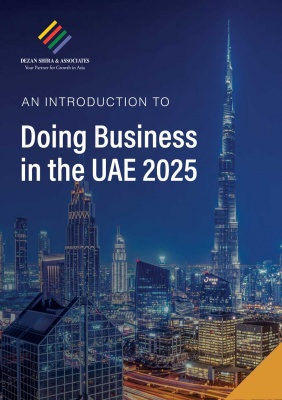Oman-India CEPA Talks Likely to Gain Momentum as Piyush Goyal Visits Muscat
Indian Commerce and Industry Minister Piyush Goyal successfully concluded his visit to Muscat from January 27-28 to advance discussions on the Oman-India Comprehensive Economic Partnership Agreement (CEPA). The visit reflects India’s commitment to strengthening economic and trade ties with Oman, a key trading partner in the Gulf Cooperation Council (GCC).
In 2023-24, bilateral trade between the two countries was valued at US$8.94 billion, a decline from US$12.39 billion in 2022-23. Petroleum products and urea dominated Indian imports, accounting for over 70 percent of the total. India’s merchandise exports to Oman included gasoline, iron and steel, electronics, and machinery, worth US$3.7 billion, which are expected to benefit from reduced tariffs under the proposed CEPA.
Advancing trade negotiations
The CEPA talks, formally initiated in November 2023, aim to significantly reduce or eliminate customs duties on goods, ease norms for trade in services, and enhance investment flows. While the negotiations concluded in early 2024, Oman requested revisions on market access for certain products, delaying the agreement’s finalization.
Oman and India have since engaged in multiple rounds of discussions, with the fifth round held earlier this month. The talks are now at an advanced stage, with both nations striving for a “commercially significant, balanced, equitable, ambitious, and mutually beneficial” agreement, according to India’s Commerce Ministry.
Key highlights of Piyush Goyal’s visit to Oman
11th India-Oman Joint Commission Meeting (JCM): Goyal co-chaired the 11th Session of the JCM with H.E. Qais bin Mohammed Al Yousef, Oman’s Minister of Commerce, Industry, and Investment Promotion. Discussions during the JCM focused on advancing cooperation in trade, investment, technology, food security, renewable energy, and other critical sectors. The Ministers conducted a comprehensive review of bilateral trade and outlined actionable steps to strengthen business ties.
Progress on India-Oman CEPA: The Ministers deliberated on the India-Oman Comprehensive Economic Partnership Agreement, which is in advanced stages of negotiation. Both sides agreed to expedite discussions, aiming for an early signing of the CEPA. The agreement is poised to significantly enhance bilateral trade and investment opportunities.
Amendments to the Double Taxation Avoidance Agreement (DTAA): A Protocol to amend the India-Oman DTAA was signed during the visit. This amendment aligns the agreement with international tax standards, streamlines tax procedures, and promotes cooperation on cross-border taxation, thereby encouraging greater economic collaboration.
Bilateral engagements and business forums: Goyal engaged with key Omani leaders, including H.H. Sayyid Asa’ad bin Tarik Al Said, Deputy Prime Minister for International Relations and Cooperation Affairs, H.E. Sultan bin Salem Al Habsi, Minister of Finance, and H.E. Ali bin Masoud Al Sunaidy, Chairman of the Public Authority for Special Economic Zones and Free Zones (OPAZ). These meetings underscored the shared commitment to deepening economic ties.
The Minister also participated in the India-Oman Joint Business Council (JBC) meeting hosted by the Oman Chamber of Commerce and Industry (OCCI). The forum facilitated discussions between Indian and Omani business communities, exploring investment opportunities and incentives in both nations.
At a Business Roundtable hosted by the Indian Embassy, Goyal met Omani CEOs and business leaders, emphasizing India’s growth potential and inviting suggestions to enhance bilateral cooperation.
Cultural and educational engagements: Goyal addressed the Future Leaders Program at Oman’s Royal Academy of Management, sharing insights on leadership and India’s economic growth story. He also visited the iconic Sultan Qaboos Grand Mosque and the historic Shiva Temple in Muscat, highlighting the enduring cultural and people-to-people connections between India and Oman.
Implications of the Oman-India CEPA
The proposed CEPA is expected to provide Indian goods a competitive edge in Oman by reducing import duties, which currently range from 0 to 100 percent. For example, Indian goods such as gasoline, electronics, and machinery, which face a 5 percent import duty, could become more price competitive.
For Oman, India’s vast market of 1.4 billion consumers represents significant opportunities for its exports. India, in turn, could cater to Oman’s demand for diversified and high-value goods and services, driven by Oman’s higher per capita income of US$25,060 compared to India’s US$2,370.
Strategic partnership
Oman is India’s third-largest export destination within the GCC. India already has a CEPA with the UAE, operational since May 2022, which has significantly bolstered bilateral trade. A similar agreement with Oman could further India’s economic influence in the region and enhance its access to GCC markets.
Piyush Goyal’s visit is expected to inject fresh momentum into the CEPA talks, paving the way for a historic agreement that would strengthen economic ties between the two nations.
This article was originally published January 27, 2025. It was last updated January 28, 2025.
About Us
Middle East Briefing is one of five regional publications under the Asia Briefing brand. It is supported by Dezan Shira & Associates, a pan-Asia, multi-disciplinary professional services firm that assists foreign investors throughout Asia, including through offices in Dubai (UAE), China, India, Vietnam, Singapore, Indonesia, Italy, Germany, and USA. We also have partner firms in Malaysia, Bangladesh, the Philippines, Thailand, and Australia.
For support with establishing a business in the Middle East, or for assistance in analyzing and entering markets elsewhere in Asia, please contact us at dubai@dezshira.com or visit us at www.dezshira.com. To subscribe for content products from the Middle East Briefing, please click here.


